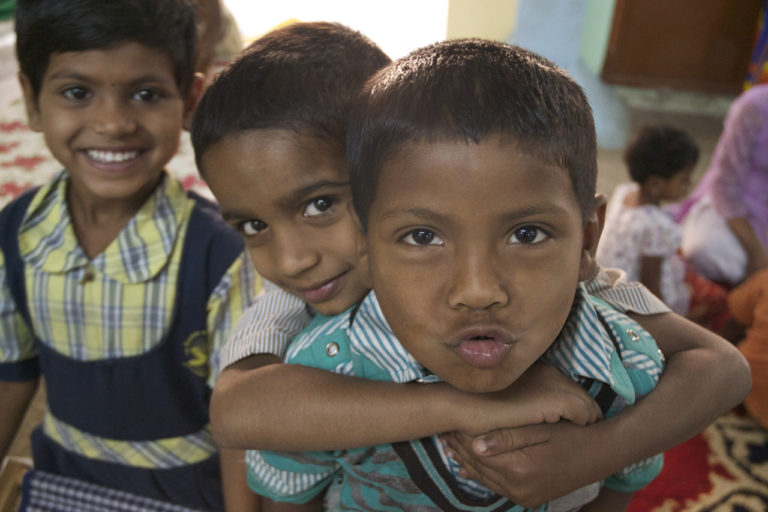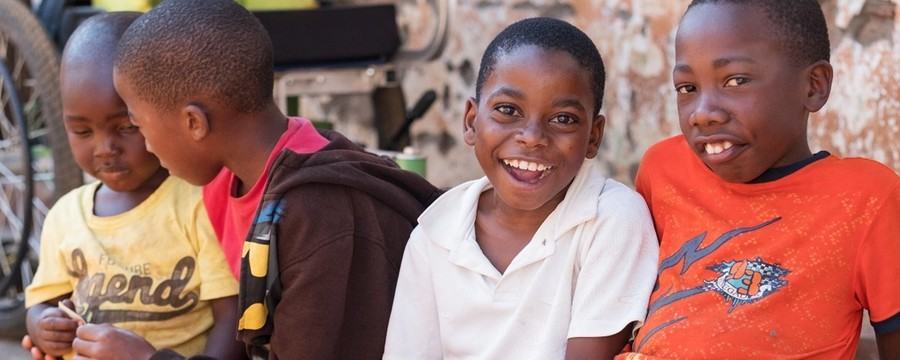Children with Developmental Disabilities and the Global Movement of Disability

Share this step
We are going to consider how children with developmental disabilities fit into the global disability rights framework and disability rights movement. This movement aims to bring about long-lasting benefits for children and adults with disabilities, as societies across the world remove barriers to the participation of people with disabilities throughout their policies and practices.
Childhood developmental disability is important for the global development agenda for a number of reasons. In this step, we will provide three perspectives: (1) The Sustainable Development Goals; (2) International Human Rights Conventions; (3) Other international and national policies.
1. Sustainable Development Goals
 © United Nations
© United Nations
The Sustainable Development Goals (SDGs) are a global call to action to end poverty, protect the planet and ensure that all people enjoy peace and prosperity. The SDGs aim to “Leave no one behind”, and make a commitment to reaching the world’s most marginalised groups. Children with disabilities should be an important priority for the SDGs, as they are a large group – (there are 150 million children with disabilities globally, of whom 53 million are children with developmental disabilities under the age of 5).1 Moreover, failure to include children with disabilities means exclusion of their adult caregivers and potentially their siblings also.
However, children with disabilities are already being left behind in a number of core areas. For instance, if we look at the first four SDG goals:
- SDG 1 “No poverty”: A systematic review showed a strong link between childhood disability and poverty.2
- SDG 2 “Zero hunger”: Studies have shown that children with disabilities are more likely to experience malnutrition than children without disabilities.3
- SDG 3 “Good health and well-being”: A large study by Plan International across 30 countries showed that children with disabilities were 5-10 times more likely to report a serious health condition (both related to their impairment as well as general illnesses) than children without disabilities.4
- SDG 4 “Quality education”: The study by Plan International also showed that children with disabilities were 5-10 times more likely to be excluded from school than children without disabilities.4
Several of the SDGs explicitly state that they cannot be attained unless persons with disabilities are included. For instance, Goal 4 on inclusive and equitable quality education and promotion of life-long learning opportunities for all focuses on eliminating gender disparities in education and ensuring equal access to all levels of education and vocational training for the vulnerable, including persons with disabilities. In addition, the Goal calls for building and upgrading education facilities that are child, disability and gender sensitive.
The SDGs are also interlinked – for instance, it will be difficult to achieve inclusion of children with disabilities in education without ensuring that they have access to healthcare. The SDGs therefore cannot be met without a specific focus on children with developmental disabilities, as they are a large and excluded group.

Lonjezo (9) at this home in Lilongwe, Malawi. © CBM/Hayduk
2. UN Human Rights Conventions
In addition to the SDGs, there are United Nations Human Rights frameworks protecting the rights of children with developmental disabilities. The United Nations Convention on the Rights of Persons with Disabilities (UNCRPD) reinforces the rights of persons with disabilities. The Convention came into force in 2008, and as of early 2019 there were 162 signatories and 177 parties. Signatories are committed to protecting the rights of people with disabilities, and this is monitored by the Committee on the Rights of Persons with Disabilities. Consequently, this Convention has been translated into policy and law, and countries are held to account for their actions.
The Convention is relevant to all persons with disabilities, but certain articles may be particularly relevant to children with developmental disabilities. For instance:
- Article 7 of the Convention is dedicated to children with disabilities, recognising that children with disabilities are entitled to all fundamental freedoms and rights on an equal basis as other children, as well as the right to have their voices heard and taken seriously, in accordance with age and maturity.
- Article 23, which emphasises the importance of the family and a child’s right to participate fully in family life, with the aim of abolishing neglect or abandonment.
- Article 24 recognises the right of persons with disabilities to education. The CRPD promotes early intervention and inclusive education at all levels, including the provision of necessary support and technical aids, such as facilitating the learning of Braille.
- Article 25 focuses on health and the right of adults and children with disabilities to receive the “highest attainable standard of health without discrimination on the basis of disability.”
The second relevant UN Convention is the United Nations Convention on the Rights of the Child (UNCRC). The UNCRC came into force in 1990 and built upon the child’s rights across the world. The Convention incorporated social, civil, economic, cultural and protection rights, affirming that children are rights-holders, not just beneficiaries of adult protection. The CRC was the first UN treaty to include disability. Children with disabilities are implicitly included within all Articles of the Convention. However, Article 23 is specifically concerned with disabled children, emphasising the right of children with disabilities to a “full and decent life in conditions which ensure dignity, promote self-reliance and facilitate the child’s active participation in the community”. Article 24 recognises the right of children with disabilities to receive healthcare and integration within their community. The UNCRC emphasises the need for children with disabilities and their families to receive early support and services, and has long been an advocacy tool by family groups and healthcare professionals.
 © Holt International
© Holt International
3. International and national policies
The majority of UN member states have ratified these Conventions and started to implement international and national policies that have a focus on people with disabilities. For instance, most countries will have laws that protect the right to healthcare and education for children with disabilities. However, these policies are not always translated into practice.
Healthcare professionals are in a powerful position to work with families and advocate for the rights of children with developmental disabilities listed under these Conventions. Professionals should improve their knowledge of these Conventions and inform children and families of their rights. By working together with parents and children, the wider movement of advocates for persons with disabilities will continue to grow and we can realise an equitable, fair world for children with developmental disabilities.
Further reading
In the International Centre for Evidence in Disability’s previous course, Dr. Elizabeth Lockwood, CBM’s Representative to the United Nations, explained the history of the “Nothing about us without us” disability movement, and how this supported persons with disabilities across the world. We recommend reading this article, as it will enhance your learning and understanding of the material above.
Share this
Integrated Healthcare for Children with Developmental Disabilities

Integrated Healthcare for Children with Developmental Disabilities


Reach your personal and professional goals
Unlock access to hundreds of expert online courses and degrees from top universities and educators to gain accredited qualifications and professional CV-building certificates.
Join over 18 million learners to launch, switch or build upon your career, all at your own pace, across a wide range of topic areas.
Register to receive updates
-
Create an account to receive our newsletter, course recommendations and promotions.
Register for free







